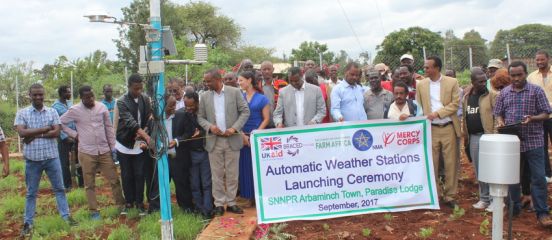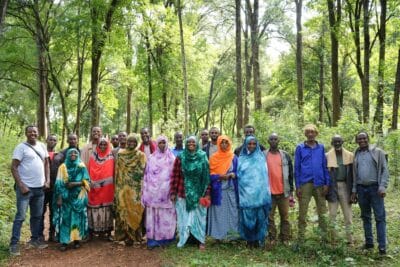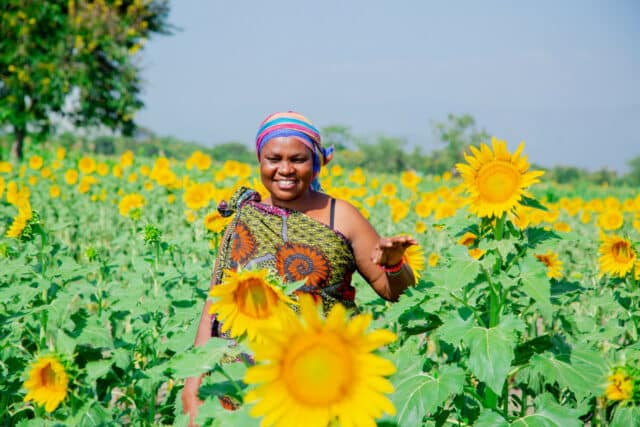News
6 November 2017
New Ethiopian weather stations look to take the bite out of climate shocks

A set of new automated weather stations has been installed in Ethiopia to help pastoralist and agro-pastoralist communities respond better to recurring climate shocks.
A total of 25 solar-powered automated weather stations have been installed across Afar, Somali and SNNP regions. The stations supply localised, accurate and timely data to relevant government agencies and local communities, which will help communities predict the availability of water and grass for their livestock to graze on and allow government agencies to pre-empt and monitor extreme weather events.
The weather stations were installed by the MAR (Market Approaches to Resilience) project led by Farm Africa and implemented with Mercy Corps. The MAR project is part of the global Building Resilience and Adaptation to Climate Extremes and Disasters (BRACED) programme funded by UK aid.
The National Meteorological Agency of Ethiopia, who run the stations, will use the weather data to provide woreda (county) level information on air temperature, humidity, rainfall, soil temperature and wind direction and speed, producing three-to-five day, ten day and seasonal climate reports.
At the launch of the event in Arba Minch on 28 September 2017, Ato Amare Hailu, Director of the SNNPR Regional Meteorological Services Directorate, explained the weather stations’ importance. “Ethiopia has a diverse climate, and different parts of the country experience different rainy seasons”, he explained. “The use of an automated weather station is then vital to plan ahead and to provide specific and effective climate information and agricultural advisory to communities”.
In recent years the SNNP region has been hit hard by extreme weather events. In 2016, the area missed two rainy seasons, resulting in water shortages and an outbreak of animal disease that left pastoralist communities with depleted livestock herds.
The intervention hopes to take the bite out of future climate shocks by using the data to trigger weather-indexed “micro-insurance” payments. The MAR project’s micro-insurance scheme uses weather parameters, such as rainfall and temperature, to trigger payments ahead of extreme events. These payments allow climate-vulnerable communities to appropriately prepare for potential catastrophes and recover from shocks.
The information generated by the weather stations will also be used to inform everyday farm-level decisions. Equipped with reliable projections of future weather patterns, pastoralists can anticipate changes and develop adaptation plans accordingly, such as cattle destocking and water conservation activities.
The MAR project team shares weather reports through field agents and local radio stations, who translate the content into ten different languages, and make the information understandable and relevant to the communities they work with.
“The information we are listening to now is very useful. It is exact.” commented Ato Endashaw Lole, a local resident. “If the radio says there will be light rain, there will be light rain. If the radio says there will be heavy rain, there will be heavy rain — and we’ll be ready for it”.




